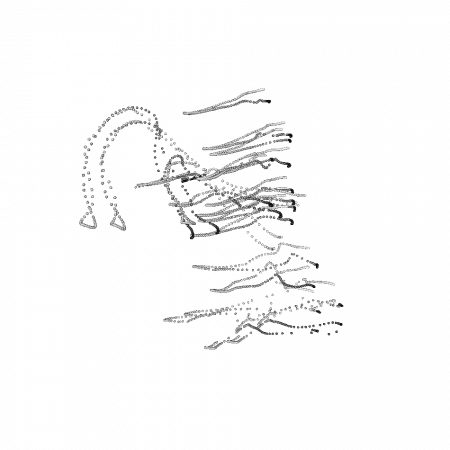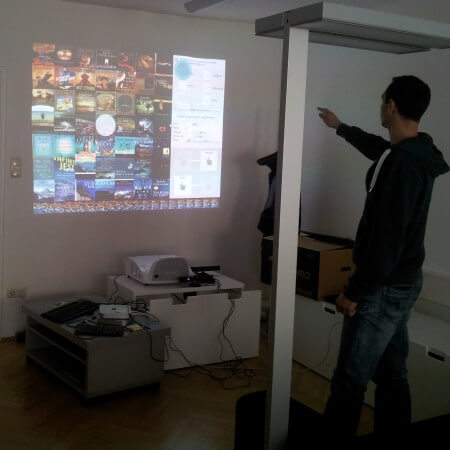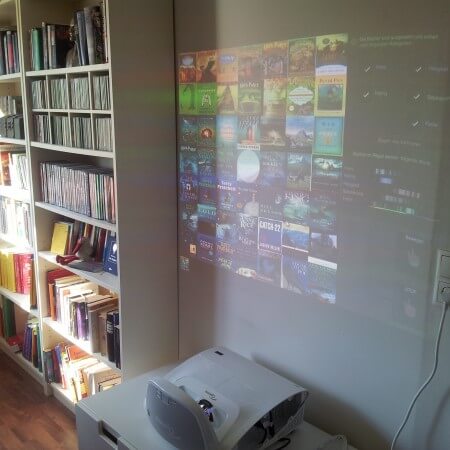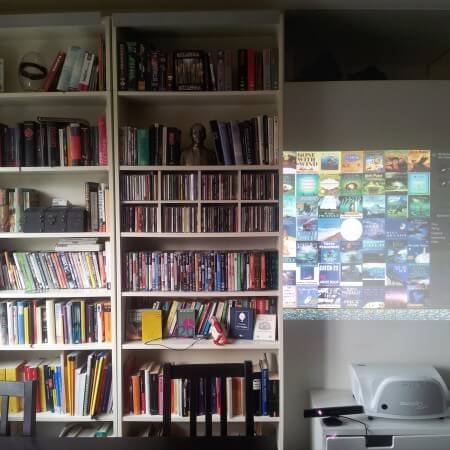In this research activity, we consider the human body as a unified structure and its movement central for interaction design. Through reflective and critical exploration of our own body movements as they are captured by 3D sensors, such as the Microsoft Kinect, we aim for design visions and ultimately new ways to “interface” directly with digital artifacts through body movement.
Establishing a coupling between a digital artifact and free full-body movement of a person is an enormous design challenge. We have achieved some progress by taking inspirations from related work in biology (i.e., animal group movement) and by applying measures (i.e., polarisation, expanse, and angular momentum) used to analyse animal group movement to the analysis of full-body movement as it is constituted by movement of groups of joints (e.g., elbow, wirst, shoulder).
We studied full-body movement as an interaction modality for a game setting but also to interact with a digital bookshelf (i.e., a projector and camera based system) in a home context for decorating the bookshelf with digital books.








